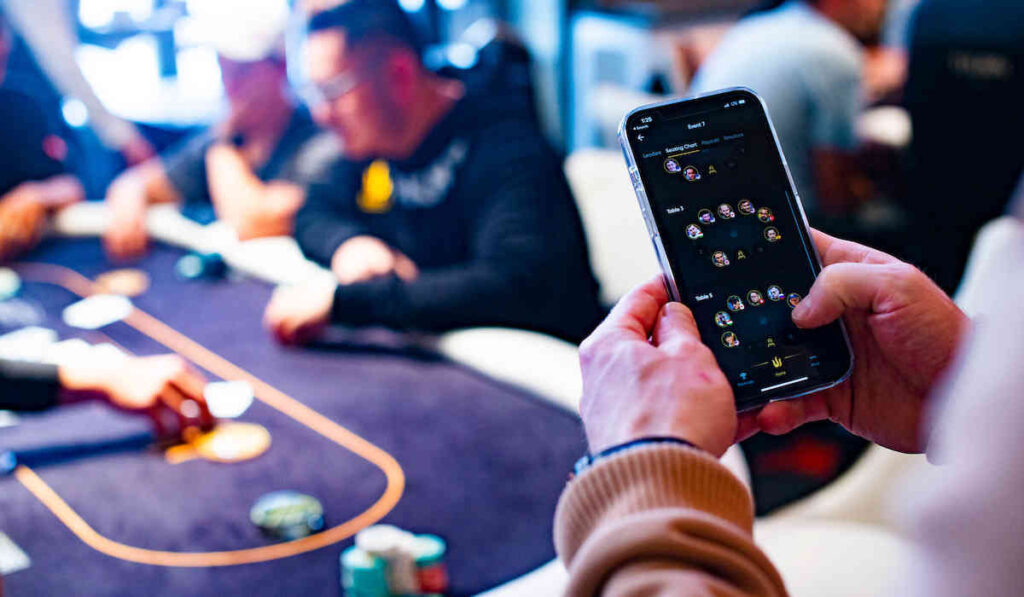One of the most beautiful things about poker is the way the game is constructed as zero-sum. In nearly all scenarios one player wins what another player has lost. (Rake is the cost of playing the game – but over time comes at the expense of all players, not just the winners or losers).
This element means players are incentivized to get better at the game knowing they are only battling other players, not elements that are outside of their control.
Too often, the poker industry tries to behave like players in a game and makes decisions which are often, at best, zero-sum and, at worst, negative-sum. The poker industry is constantly hoping and longing for a second poker boom while seemingly not acting in a way that would help create that opportunity.
Focus on Expansion, Rather Than Extraction
In many instances, poker companies both live and online, focus heavily on extracting as much revenue as possible from their existing player base while failing to invest even a fraction of that energy or those resources into expanding their player base and the appeal of poker to new players.
The much-derided decision PokerStars made in 2015 to eliminate the SuperNova Elite program is one such example and the impact it had on their brand and player base has been discussed at length.
Amaya Gaming, having acquired the brand only 16 months earlier, was likely trying to recoup as much of the $4.9 billion purchase price as quickly as possible and attempted to extract as much as they could from some of the most regular and loyal customers they had.
There are instances of operators looking outside of the poker bubble to expand poker’s reach. For example, PokerStars’ Big Game on Tour is an amazing promotional tool for their product.

The cast often includes PokerStars Team Pros like Jason Koon or Lex Veldhuis and recognizable players such as Alex Keating and Phil Hellmuth.
This mostly appeals to existing players and fans. The secret sauce is in the Loose Cannon – the amateur poker player given a bankroll and an opportunity. The storytelling of the episode is built around the relatability of this player and is meant to give those new to poker somebody to cheer for as they take on the pros.
Compete AND Collaborate
“The nature of capitalism is that if you’ve got a good business, someone is always trying to take it away from you. That makes you operate better.” – Warren Buffett.
Customers in every industry, not just poker, benefit when companies compete for their business and their loyalty. In theory, and quite often in practice, prices drop, selection and quality increases.
Poker companies use rake schedules, prizepool guarantees, tournament schedules and structures, as their weapons in competition.
The poker industry has a unique opportunity to add a layer of collaboration while still competing for customer loyalty that is most definitely a positive-sum approach. The collaboration between the World Series of Poker and Triton Poker Series in 2024 is a solid example of two brands working together in a way that benefits not only them, but players and fans as well.
Having the Triton Million event at WSOP Paradise meant that some of the players who would normally frequent only Triton events were on site with another 14 WSOP bracelet events to play. Triton also handled the broadcast production and their livestream product is one of the best in the industry.

Ironically, WSOP Paradise is also an example of an operator acting in a zero-sum fashion to the detriment of the poker industry. The event was created a year after the World Poker Tour successfully hosted the WPT World Championship at Wynn Las Vegas in December 2022.
The 2023 and 2024 WSOP Paradise schedules intentionally overlapped with the dates of the WPT event, forcing players to make a decision between the two.
Had GGPoker elected to host WSOP Paradise in January, a window that historically belonged to the PokerStars Caribbean Adventure at the same venue, the likelihood is that fields for both the WPT World Championship and WSOP Paradise events would have both been larger to the benefit of everybody.
View Media and Creators as Allies
Major sports leagues around the world have built in-house media empires as a means of showcasing their products in a positive light to an engaged audience. Yet they also continue to work with major outlets like ESPN and The Athletic to spread the gospel of their product.
Those same leagues have also leaned hard into the world of influencers and creators to broaden their audience through social media opportunities they may not be able to create themselves.
The WSOP and WPT have both worked closely with some of poker’s best influencers and creators at their live events over the past few years. Allowing those unique personalities to shine through social media content as a means of showcasing various events has certainly allowed for the two brands to find new audiences.
Likewise, Triton, PokerStars, and some of the leading cash game livestreams, have also embraced this approach.
Anybody who ignores the role poker vloggers have played in growing the game is overlooking one of the most significant grassroots marketing engines poker has had in the last decade.
While gaming regulations in various markets present challenges with allowing filming in certain ways, many, including most notably MGM properties lead by Sean McCormack, have found ways to welcome vloggers while not running afoul of gaming boards and player privacy requirements.
The WSOP recently denied Ethan ‘Rampage’ Yau’s media credential application for this summer. Some assumed that this was due to Yau’s role as an ambassador for one of WSOP’s main competitors, the WPT.
In reality, it’s partially a media rights issue and partially an issue with players having/wearing credentials and having access in situations where a competitive advantage is possible. To their credit, WSOP issued WPT.com writers and photographers media credentials for the 2023 and 2024 World Series of Poker and gave them the same access as every other poker media outlet outside of official partners.
One key area that each of the operators stands to gain the most ground is how they can optimize their websites to share more than schedules, structures, and press releases.
From 2022 through early 2025, WPT.com had a unique approach that saw the content focused on covering all of poker – including results and narratives from competitors – in an attempt to grow the audience.
Triton Poker has recently started doing a fantastic job of sharing stories and content from their events and the players that frequent them through their website and social media.
Operators who go beyond press releases and champion profiles by investing in properly telling the stories of the players are going to find a higher success rate in reaching new players than an operator focused on extracting more rake or fees from existing players.
The approach that PokerStars took in creating content around the inaugural group of Platinum Pass winners for the first PokerStars Players Championship event in 2019 is a near perfect model for putting poker in front of new audiences in a positive-sum approach.
(Full disclosure: the WPT.com content revamp was a project I led from January 2022 through January 2025)
Innovation Creates Value
Companies trying to grow their market share in any industry often turn to innovation as the fastest method to victory. In a zero-sum world, innovation is hoarded under the guise of copyright protections but a healthy industry allows and encourages the sharing of developments which elevate the user experience and forge a path to a bigger overall market.
If the creators of popular tournament formats like the Mystery Bounty or Flip & Go had insisted on exclusivity and blocked others from using similar models, those innovations wouldn’t have become widely adopted. Letting other operators – competitors – use these formats grows overall interest in live events, benefiting all tours, large and small.
The Triton Poker Series, which due to the high roller level of buy-ins that make up their schedule, has a small player base but for years has had an industry-leading smartphone app that removes a lot of the friction players at live events sometimes experience from making registration easy to real time data being available during play while subsequently giving fans following at home an elite level experience.

Now, after two years of testing a functionally similar product in a limited but live environment at WSOP Paradise, WSOP recently announced WSOP+ would be available for use in Las Vegas this summer.
The entire premise of the app is that it solves a number of problems that players of all levels have had at the WSOP for years. Long lines, difficulty registering, accurate chip counts, having enough funds on hand to get into an event.
It also allows the WSOP to properly build a database of player information and market to them in ways not previously possible. It’s a clear real-time example of something that is positive-sum born out of innovation.
Evangelists Not Gatekeepers
A zero-sum mindset means companies treat influencers, players, or platforms as threats to their market share. A shift to a positive-sum approach means those same influencers, players, and platforms are viewed as an opportunity to grow the game and the market in unison.
The more people who evangelize poker in content or media or even in their own social circles, the more likely it is that poker will find its way outside of the existing bubble.
As new players discover poker – whether that’s online or in casinos and card rooms – the industry must make the experience welcoming enough that they choose to come back.
Everybody likes pie. Instead of fighting and scrapping for every single crumb left in the pie dish, poker industry executives and the companies they lead should find ways to grow the pie. This mindset still serves their bottom line and/or shareholders, but also ensures that there are more opportunities to grow those revenue numbers in the long term.
The more welcoming and visible poker becomes, the more players and operators benefit. Poker’s future depends not on who controls the audience, but who creates it.


